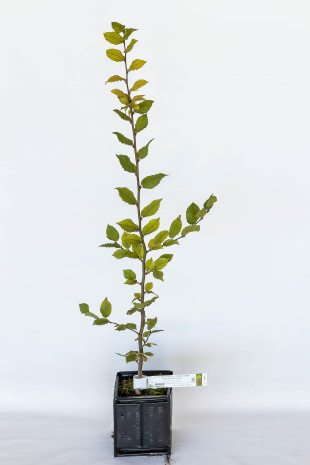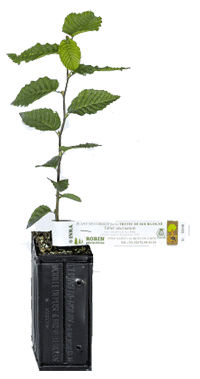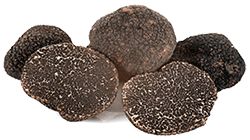


 Young truffle plant of common hornbeam (Carpinus betulus) mycorhized with tuber melanosporum. Common hornbeam intended for the production of black truffles. Truffle hornbeam plant aged from 1 to 3 years, produced in France with certified quality under INRAE control.
Young truffle plant of common hornbeam (Carpinus betulus) mycorhized with tuber melanosporum. Common hornbeam intended for the production of black truffles. Truffle hornbeam plant aged from 1 to 3 years, produced in France with certified quality under INRAE control.
You wish to diversify your truffle field and try your hand at growing the black truffle? Are you looking for plants likely to produce this famous "Black Diamond" with its inimitable flavor, the jewel of gastronomic meals? Thanks to its excellent truffle-growing abilities, the common hornbeam could well satisfy your needs and appear as the adequate truffle plant to support and increase the production of your truffle orchard!
 This common hornbeam truffle plant is obtained after controlled and certified mycorrhization of a common hornbeam tree (Carpinus betulus) with Black truffle spores (Tuber melanosporum). The tree obtained is ready to be planted in your truffle field. It will produce its first truffles within 6 to 7 years.
This common hornbeam truffle plant is obtained after controlled and certified mycorrhization of a common hornbeam tree (Carpinus betulus) with Black truffle spores (Tuber melanosporum). The tree obtained is ready to be planted in your truffle field. It will produce its first truffles within 6 to 7 years.
In order to meet your expectations, our common hornbeam truffle plants, mycorhized with the black truffle, are available in 4 sizes of cups:
- in anti-chignon® R430 cup of 0.43 liters
- in anti-chignon® R600 cup of 0.6 liters
- in anti-chignon® R1.5L cup of 1.5 liters
- in R3L container (volume of 3 liters)
The common hornbeam (Carpinus betulus) is listed among the many forest host species that can live in symbiosis with the Black truffle. Sometimes called hornbeam, it is a fairly common tree in the forests of Central Europe. This tree has all the qualities required for truffle cultivation: it grows relatively quickly, can withstand repeated and severe pruning, and is adapted to the different types of soil in Western Europe. Although it is very resistant to frosts and heat, it does not grow very high in the mountains (1000 m altitude maximum). Not very exigent on the nature of the soil, it prefers nevertheless the silty and fresh soils benefiting from a sunny or semi-shaded exposure.
 A true "black diamond", Tuber melanosporum is as rare as it is sought after. It can be recognized by its rounded shape, sometimes bumpy, and its black flesh marbled with white. This truffle gives off an intense perfume and reveals fine aromas that make it an exceptional mushroom. Emblematic of French gastronomy, the black truffle can be eaten cooked or raw, as a seasoning or as an accompaniment to a dish. Black truffles are harvested from November to early March. Depending on the age of the plant and the land chosen, you will have to wait between 6 and 8 years to harvest your first black truffles.
A true "black diamond", Tuber melanosporum is as rare as it is sought after. It can be recognized by its rounded shape, sometimes bumpy, and its black flesh marbled with white. This truffle gives off an intense perfume and reveals fine aromas that make it an exceptional mushroom. Emblematic of French gastronomy, the black truffle can be eaten cooked or raw, as a seasoning or as an accompaniment to a dish. Black truffles are harvested from November to early March. Depending on the age of the plant and the land chosen, you will have to wait between 6 and 8 years to harvest your first black truffles.
Our truffle hornbeam plants are produced in our laboratories under the control and license of INRAE. These plants are then pampered for many months in our nurseries. Quality plants, carefully selected, it is the guarantee to obtain a good yield after only a few years.
 The plants raised in ROBIN ANTI-CHIGNON® buckets are subject to a guarantee of recovery in the event of failure to recover more than 20% of the plants delivered. Under this guarantee, the seller undertakes to replace free of charge the defective plants during the season following the actual observation by the seller of the defective delivered plants.
The plants raised in ROBIN ANTI-CHIGNON® buckets are subject to a guarantee of recovery in the event of failure to recover more than 20% of the plants delivered. Under this guarantee, the seller undertakes to replace free of charge the defective plants during the season following the actual observation by the seller of the defective delivered plants.